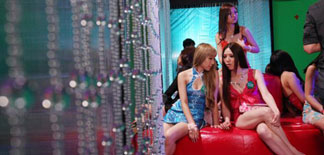
WEIGHT: 57 kg
Breast: E
1 HOUR:70$
NIGHT: +30$
Sex services: Blow ride, Strap On, Pole Dancing, Fisting anal, Dinner Dates
There can be no question that there remains much to discover in both approaches, but there are also interesting problems to raise outside them, particularly around what both legal and literary sources have to say about social history and historical practice. One such area that is still relatively neglected, given its apparent prevalence, is male same-sex prostitution, and it is my aim here to take further steps to explore what literary sources reveal about practices and cultural assumptions in the late Ming.
I will focus in particular on how the passive role in same-sex prostitution was represented and what that might tell us about Ming society. The close interrelation of diaristic and creative forms of writing during the period is crucial in this process. While there are numerous references to male same-sex desire in the Chinese archive, until the late Ming period references to male same-sex prostitution were relatively rare, even in literary works. They all apply rouge and powder and dress up gorgeously, are skilled at needlework, and go by female names, thus eking out a living.

We then see by clear contrast, following the economic prosperity and urbanization of late-Ming Jiangnan i. While it might initially seem strange to associate prostitution with social or cultural progress, I would nevertheless argue that this development in the structure of homoerotic fashion reflects changes that can be described as early modernity in China—at the very least it reflects a new level of relatively egalitarian opportunity for male sexual indulgence beyond a limited number of men with power, wealth, or physical strength.
The fantasy of indulging in erotic pleasures with an alluring young man was no longer the sole privilege of men at the head of wealthy and influential households, and any man who visited the larger cities of the Lower Yangtze could find men who would entertain their erotic desires or fantasies for a price. As for the men selling sex, they were no longer subject to the unique sexual privileges of a master or owner, but were able to move from one customer to another depending on how much each was willing to exchange.

The shift can be understood as part of a more general reorientation towards the market and parallels other trends emerging out of the large- scale urbanization of the late-Ming period Li ; Fei As New Historicist scholarship has pointed out, the emergence of social changes of this kind is often recorded or evident less in formal historical documents than in contemporary literary works, where the imagination is able to entertain and extend new or un-elucidated forms of social possibility Gallagher and Greenblatt , 20— Just as changes experienced during the eighteenth century Enlightenment in Europe saw anti-clerical and anti-establishment sentiments expressed in the explicit eroticism of the libertine novel and other forms of pornographic representation Hunt , 23; 30; 33—37 , the anti- establishment strain within late-Ming thought can be understood to express a nascent Chinese modernity that produced an interest in iconoclastic representations of sexuality, albeit approximately a hundred years earlier in the late-sixteenth and early-seventeenth centuries.

































